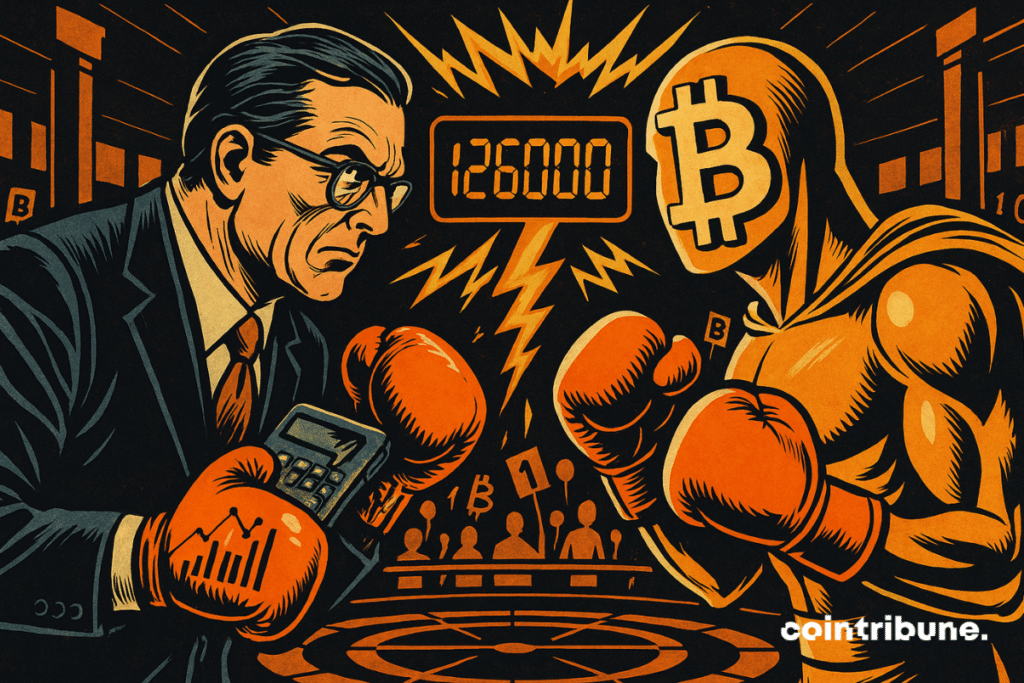JPMorgan Declares Bitcoin Undervalued: $126,000 Target in Sight?
Wall Street giant drops crypto bombshell—Bitcoin's current price doesn't reflect its true worth.
The $126,000 Question
JPMorgan's analysis suggests Bitcoin could more than triple from current levels. Their model factors in volatility comparisons with gold and estimates mining production costs—because apparently traditional banks now analyze digital commodity extraction like they've been crypto experts all along.
Institutional Adoption Accelerates
Major financial players keep adding Bitcoin exposure despite regulatory uncertainty. Hedge funds, family offices, and even pension funds now allocate to digital assets—though they'll still call it 'alternative investments' to sound sophisticated at country club meetings.
Market Dynamics Shift
Supply constraints meet growing demand as Bitcoin's programmed scarcity kicks in. The halving mechanism continues to throttle new supply while ETF inflows create relentless buying pressure—basic economics that somehow still surprises Wall Street analysts.
Risk Factors Remain
Regulatory hurdles and macroeconomic conditions could delay the rally. Interest rates and inflation data still move crypto markets—because nothing says 'decentralized revolution' like watching Jerome Powell's every word.
JPMorgan's projection might seem optimistic until you realize they've underestimated every technological shift since the internet—maybe this time they're finally right.

In brief
- JPMorgan estimates that bitcoin is currently undervalued compared to gold, due to historically low volatility.
- Bank analysts, led by Nikolaos Panigirtzoglou, set the “fair value” of BTC at 126,000 dollars by the end of this year.
- The drop in volatility makes bitcoin more compatible with capital allocation strategies of institutions.
- The volatility ratio between bitcoin and gold reaches a record level, reinforcing the comparison between the two assets.
A historically low level of volatility, catalyst for a reassessment
While its Bull run continues, JPMorgan analysts led by Nikolaos Panigirtzoglou believe that the current price of bitcoin is too low compared to gold, given the spectacular drop in its volatility.
According to them, bitcoin has seen its annual volatility drop from nearly 60% at the beginning of the year to about 30% today, a historic floor. This significant decline constitutes, according to the bank, a fundamental element in the reassessment of the asset.
BTCUSDT chart by TradingView“Yes, this is precisely the projection we presented in our note, which we expect to reach by the end of the year”, specified Panigirtzoglou, referring to their target of 126,000 $ by the end of the year.
In their analysis, JPMorgan experts emphasize the growing convergence between bitcoin and Gold regarding the risk/return profile. This transformation is based on several key elements:
- The bitcoin/gold volatility ratio has fallen to 2.0, its lowest level ever recorded, which means that BTC consumes twice as much risk capital as gold in an institutional allocation;
- The volatility-adjusted valuation model indicates a “fair value” of $126,000 for bitcoin, if one wants to align its weight with private global investments in gold (estimated at about 5,000 billion dollars);
- Bitcoin’s total capitalization should grow by about 13% to reach this target.
This technical reading provides a tangible framework for JPMorgan’s projection, while highlighting a profound change in the perception of bitcoin within traditional finance.
Pressure is rising among corporate treasurers
Beyond the mere drop in volatility, JPMorgan reveals another key phenomenon in bitcoin’s bullish trajectory: the growing appetite of corporate treasuries for the asset. Now, more than 6% of the total BTC supply is held by public companies, a phenomenon that plays a central role in market stabilization.
Analysts compare this dynamic to what was observed after the 2008 crisis, when central banks’ quantitative easing neutralized bond market movements by absorbing a massive share of securities. “Accumulation by companies works the same way on the bitcoin market”, analysts say, referring to a “passive lock-up” effect of the available supply.
This movement is amplified by the domino effect of inclusions in global stock indices, a factor often overlooked but crucial. The addition of Strategy by Michael Saylor to several major benchmarks generated new passive flows, while Metaplanet, recently promoted to mid-cap status in the FTSE Russell indices, joined the FTSE All-World Index, triggering automated purchases.
Furthermore, KindlyMD, a Nasdaq-listed company, has just filed to raise up to 5 billion dollars, with a strategy firmly focused on bitcoin as the primary cash reserve. Finally, Adam Back and his company BSTR aim to compete with Marathon Digital to become the second-largest corporate holder of BTC, behind Strategy.
All these dynamics outline the contours of a structural change in bitcoin’s role in business. This rush to strategic accumulation, coupled with falling volatility, strengthens the argument that bitcoin is no longer just a speculative asset but a full-fledged balance sheet management tool. If this trend intensifies, companies could well become the arbiters of the next bullish cycle, a profound shift in the crypto market with its 4,000 billion $ capitalization, with long-term implications for its valuation, liquidity, and integration into global portfolios.
Maximize your Cointribune experience with our "Read to Earn" program! For every article you read, earn points and access exclusive rewards. Sign up now and start earning benefits.

